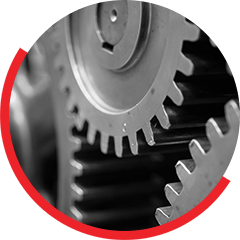For any successful distribution & manufacturing company, it’s important to address a new way to streamline its operations. Beginning from the trading of commodity and the distribution of derivatives, manufacturing is an intricate process with multiple moving parts. Due to the rapid development of the digital world and the broad advantages of data analytics, various fields of the industry sectors seeking improvement. Distribution & manufacturing is also a major industry that is not behind of adopting advanced technology. Manufacturing business faces huge transformations nowadays, distribution & supply chain also transforming at the same velocity. Advanced technology frequency having the capacity to fine-tune the manufacturing and distribution industry’s desire. Data and analytics users’ numbers also have increased drastically to drive manufacturing, distribution, and logistics management in a new age.
Data & Analytics is the art of analyzing/visualizing raw data in order to derive value proposition decision from historical information. Several backend processes independently extract, transform and load the data into an automated system to provide us with the desired result. These mechanical processes and algorithms help us to transform the raw data into meaningful information, out of which actionable insights can be derived.
Importance of Data & Analytics in Distribution & Manufacturing industry
Distribution & manufacturing industries are changing due to demand in the retail industry. The distribution and manufacturing process have diversified their operational processes and technology adoption as well. According to industry expert analytics can fill the gap between distribution and manufacturing departments, increase efficiency and help them becoming lean departments.
- Operations managers can use advanced analytics to analyze historic data of raw materials
- Analytics can improve manpower resource performance by 13%
- Analytics can help to manage warehouse operations efficiently
- Manufacturing time can be saved around 23% in inventory operation & Production planning
- Distribution performance can increase by 27% using analytics
Technology disruption demands decent margin pressure on the industry, however online wholesale marketplaces welcome the analytics role gratefully. As per a recent survey, 51% of the manufacturing leaders have integrated market analytics into the ERP system, which means they can take better evidence-backed decisions and prepare future proof operational plan more accurately.
Key features of Analytics:
- Real-time visibility of entire organization process
- Automated business event notifications
- Custom reports generated in automated systems
- Demand planning & forecasting
- Advanced warehouse management
- Real-time collaboration across all departments
- Ability to share and integrate data with the extended enterprise cloud systems
Four main stages of data & analytics, Big Data adoption and progression along a continuum:
- Educate (building a base of knowledge): 29% of industrial manufacturing respondents
- Explore (defining the business case and roadmap): 42% of industrial manufacturing respondents
- Engage (embracing big data): 25% of industrial manufacturing respondents
- Execute (implementing big data at scale): 4% of industrial manufacturing respondents.
Analytics provide inspired insights that could narrate future business practices, 67% of manufacturing companies prefer to use big data analytics to tackle the issue arise at every notch of the manufacturing process. Implementation of Data & Analytics can improve manufacturing performance at the beginning of the product development journey.
On the other-hand distribution of raw materials to manufacturers and derivatives distribution to end users also generate a similar proportion of raw data and the necessity of analytics scope too. Precisely distribution network also consists of specific application systems that having the pervasive scope of analytics.
Example: A leading food manufacturer proactively identified the impact of pricing tactics adopted by its retail channel partners on the volume sales. The analytics framework helped the pricing managers make more informed decisions by evaluating multiple scenarios and planning.
Result: manufacturer identified a group of stores (up to 56%) that had the potential to increase the price of a product up to a difference of $ 0.25 from its closest competitor without impacting sales. This had a potential revenue upside ranging from 2% to 3%
Distribution and manufacturing organizations could take advantage of the enormous amount of data that is increasing every year from the embedded and connected devices and applications – such as sensors, measuring meters, IoT, inventory management, accounting & order management. It turns out after all that integrated automated control systems can and do generate insights which are extremely valuable. As per a recent survey, approximately 34% of those companies generated annual savings in quality costs of more than 25% per year; the same proportion reported 25% or better improvements in efficiency annually by taking insights from connected devices.
Immediate improvements and positive impacts on the bottom line are available through effective collection & harvesting of data from the manufacturing sites, but they need the means to do this. Business intelligence, analytics for big data, and analytics powered by AI can provide comprehensive service which is listed in our Data & Analytics portfolio to build a sustainable future-proof foundation to your digital transformation journey. That's why an investment in a comprehensive analytics system of solution which fits the current infrastructure requirements of a company, as well as being flexible enough to have its future needs covered, makes so much sense.

